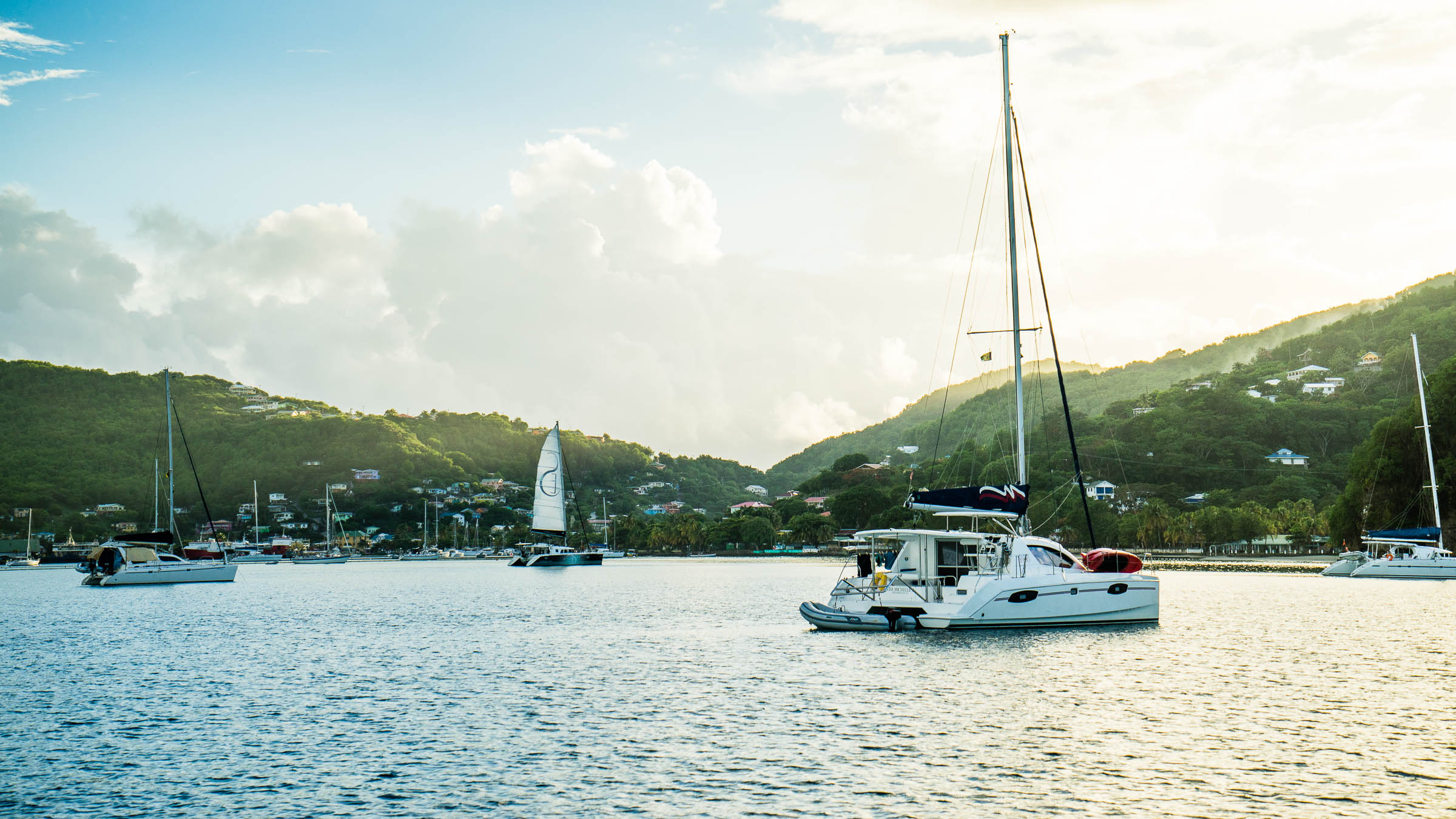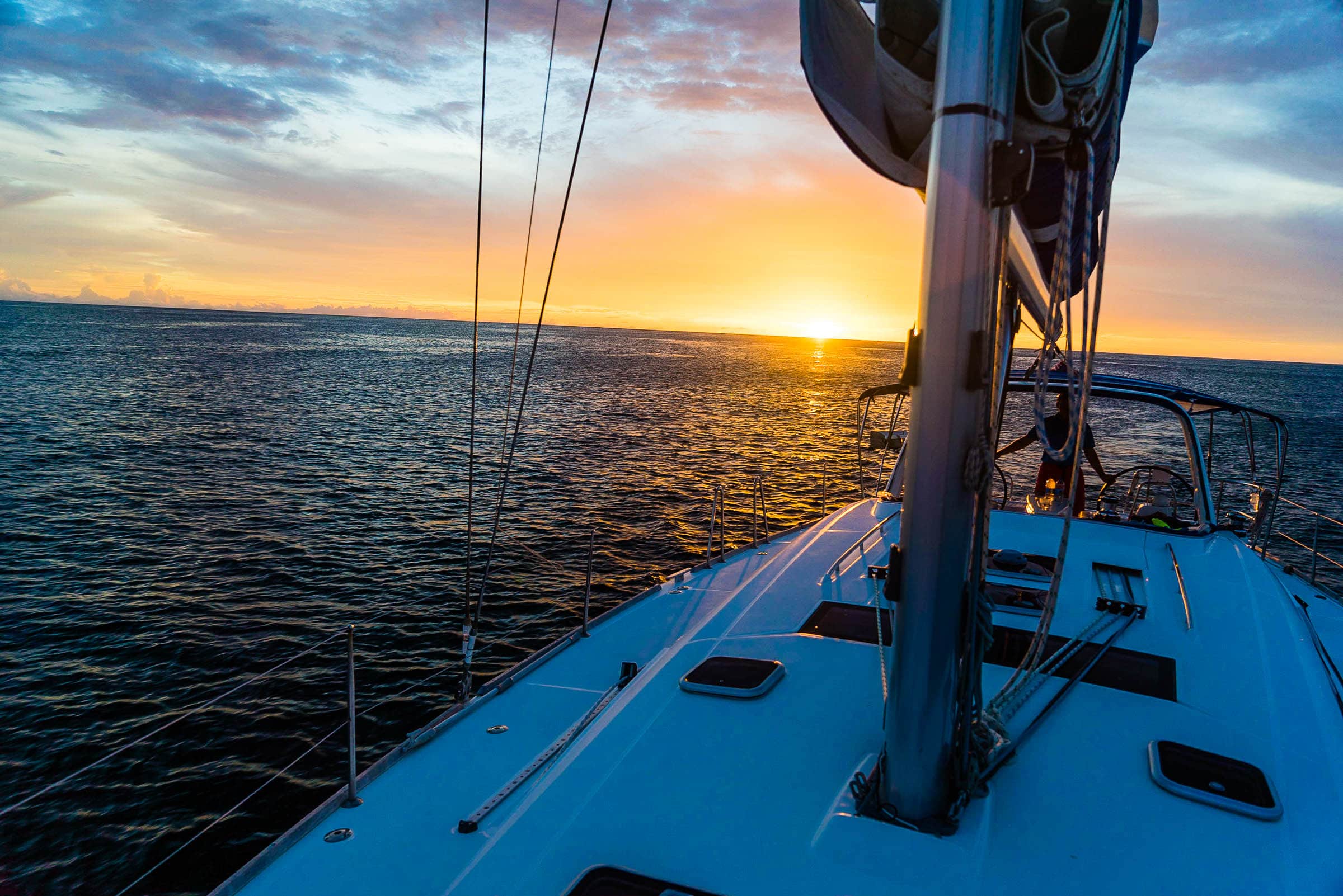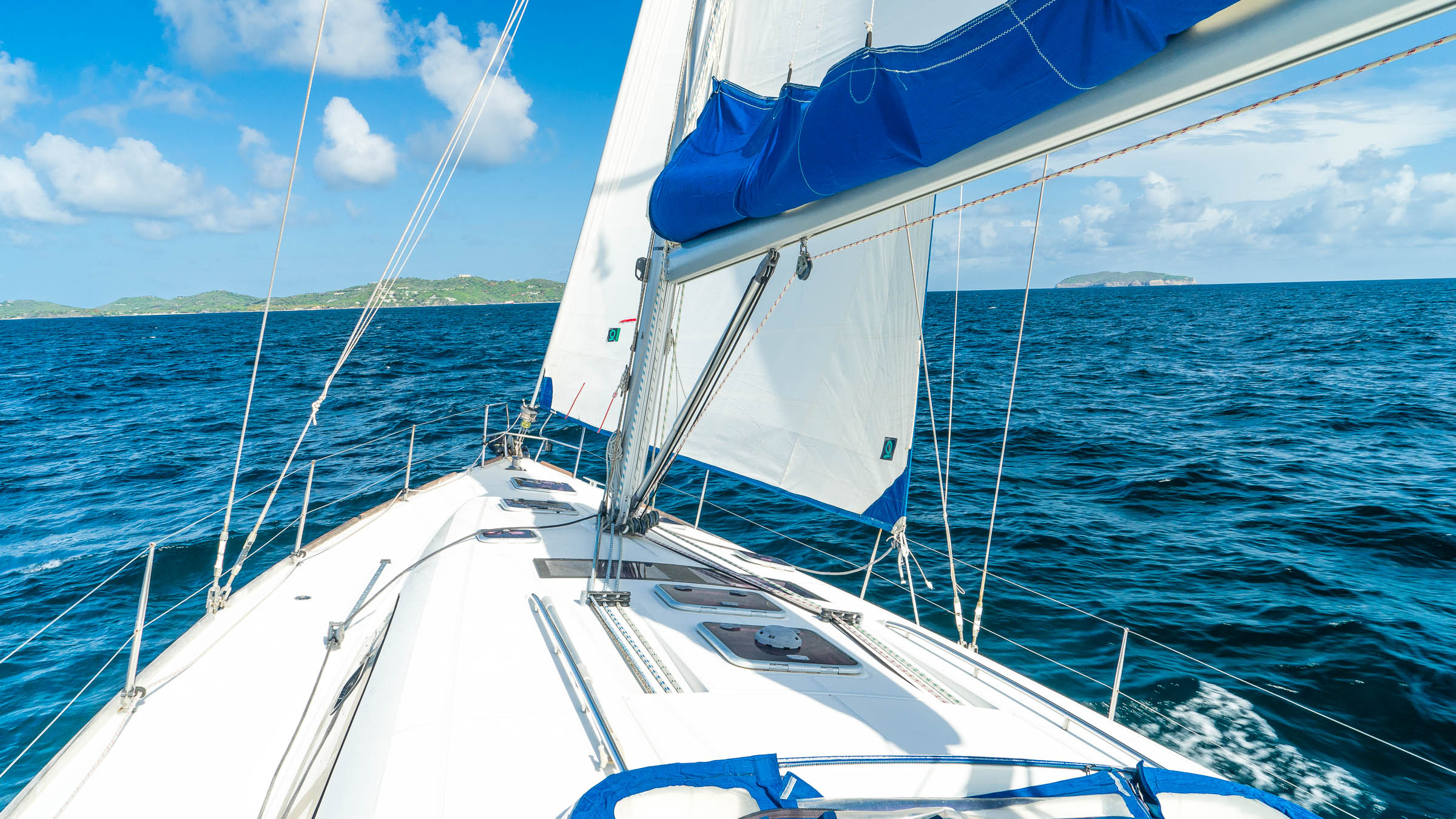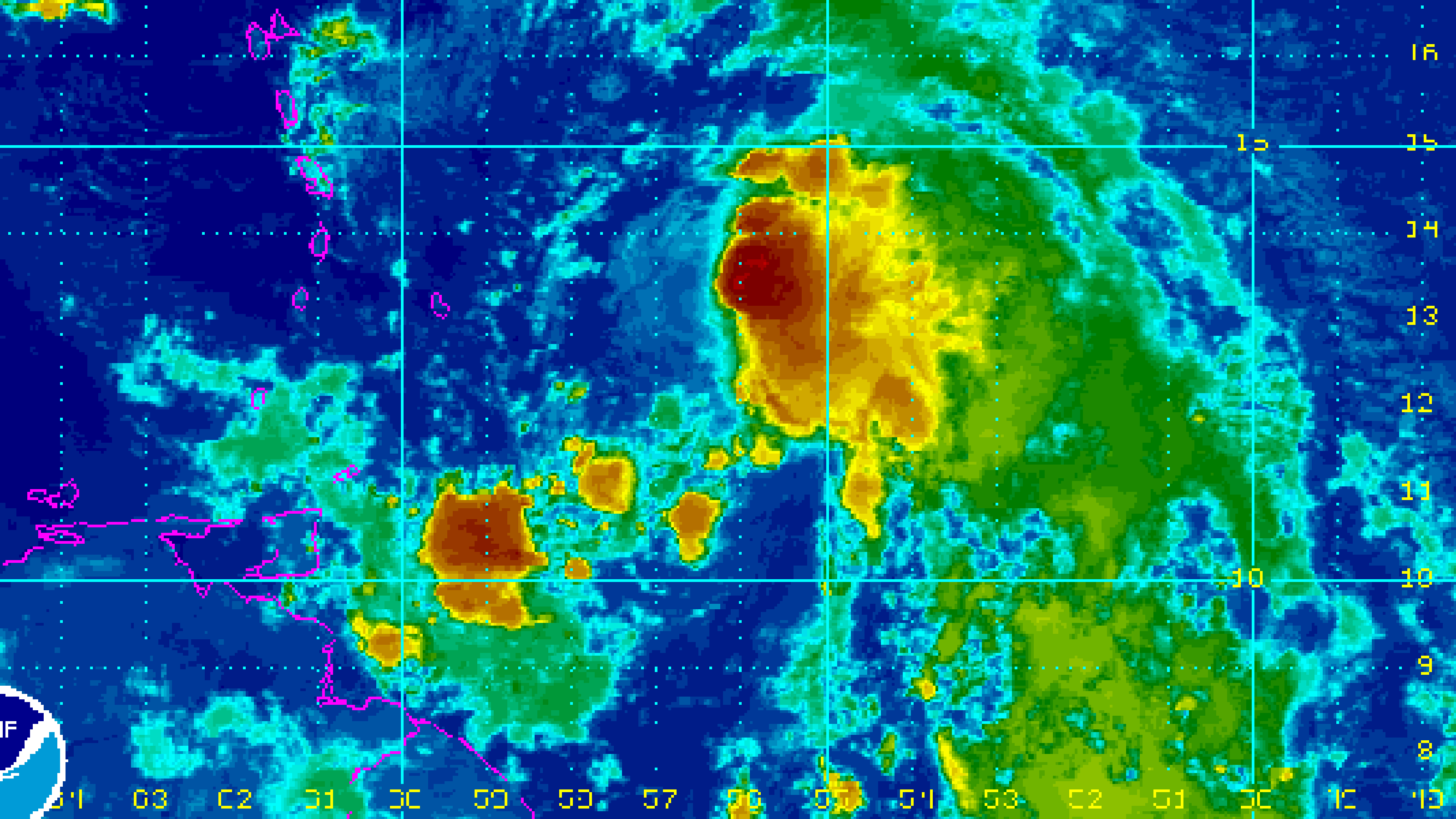Living the Dream and Learning to Sail: Part 3 — The Basics
What the hell happened to your arm?!
Chris, my instructor from LTD Sailing School stared at me in disbelief.
An hour earlier, the sky was turning mauve through the open hatch above my bunk. It was around 5am on the first morning of my sailing school immersion in the Grenadines.
Time to get up, I thought. Time to get my sailor training properly underway! Let’s do this!
I pulled on some swim trunks and rather than waking the rest of the crew, I pulled myself right through the hatch out onto the foredeck.
The view was incredible. Admiralty Bay opened up all around me—bathed in a misty predawn glow. Bequia’s hills hugged the bay in an emerald embrace. A few boats rocked slowly closer to shore. And the calm waters tugged at my Caribbean explorer heart strings.
I couldn’t resist.
I edged aft along the starboard lifelines to the transom and dove headfirst into the water.
It was heavenly.
Cool.
Clear.
And suddenly… Searingly painful!
I flailed back to the swim ladder and lurched into the boat. My right arm felt like it was on fire! Along its inside a vicious, red rash was bubbling into existence from my elbow toward my wrist. Ugghhhh… Oh crap, it burned.
Chris emerged through the companionway and caught sight of the horror show spreading across my forearm.
Sure, his first exclamation was a question, but we both quickly came to the conclusion that I’d been lashed by a jellyfish.
Lesson #1: Don’t trust the sea
Cynically, sailing has been called:
The fine art of getting wet and becoming ill, while going nowhere slowly at great expense.
For a more pleasant (though sometimes still painful) experience, I was going to have to learn a few basics.
Lesson #2: Hygiene
When it came to my classroom/dorm for the week, I’d been very lucky. It was a quite comfortable Benateau 50.5. The standing and running rigging were in good shape, the winches were motorized (though Chris still made me manually grind the lines to “get a feel for it”), the instruments were fairly high-tech, including an auto-pilot (which I didn’t even know boats could do), and the cabins were all relatively spacious.
But even with all that personal space, one of the first lessons Chris impressed upon me was on hygiene.
Flush, fill, flush, and flush again. But don’t pump your poop out in anchorages! No toilet paper in the toilet. But do use toilet paper!
Of all the ways to remain a pleasant-to-be-around part of the crew, my favorite was showering. As directed by Chris, this was done not in the actual shower (Don’t waste water!), but rather through a ritual performed off the transom.

First, jump in (which I admit I did with more than a little trepidation after my jellyfish run-in), then rinse, lather, jump in again, rinse again, done!
This became my favorite part of starting the day every morning and was actually tremendously refreshing.
Lesson #3: Provisions
On my last trip through the Grenadines, I admit I didn’t know much about the area. This time though, I had my previous experience, but more importantly, I had Chris.
Stepping onto the docks of Bequia with him, I had the perfect guide on where to go for what provisions. Fruits came from T&C Fresh Fruits & Veggies right on the waterfront.
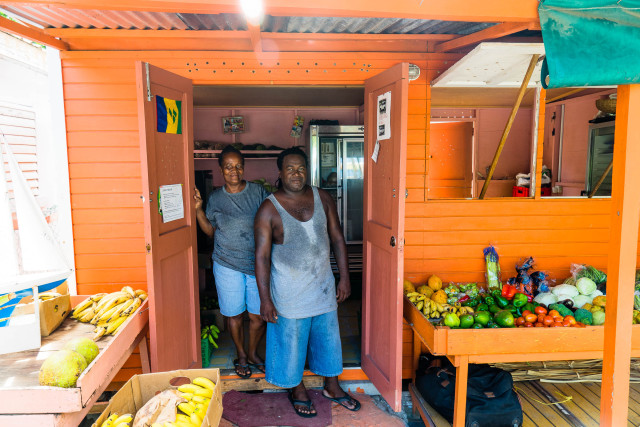
Most everything else came from Miss Doris of Doris’ Fresh Food a block off the waterfront.
Meat came from another place, the all-important rum from another, and Wi-fi from another! A lot of sailing seems to follow this pattern: when in doubt, just look to see what the sailors before you have been doing.
Lesson #4: Knots
I’m not gonna lie, other than tying my shoes, I’m not particularly handy with knots. Somehow this has never been a skill I needed to learn, but when I decided to tackle sailing it was one of the aspects that had me most engaged.
And luckily, there are only six knots that the American Sailing Association mandates as essential for the beginner sailor.
The bowline (pronounced bō-lən) is a non-slipping loop that’s good for practically everything yet strong enough to actually be used for the sails!
The cleat hitch is used to tie a line onto a cleat, like when you’re leaving your dinghy at the dock for a rum run.
The clove hitch seemed useless to me until I had to tie some fenders onto the boat for a quick stop at the docks. Then its speed was impressive.
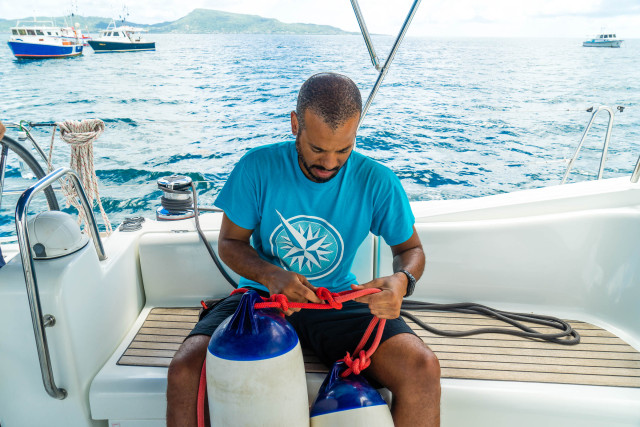
The square knot (or reef knot) which appeared to be the butt of all knot jokes (yes, there are knot jokes, it seems) is used to tie up parts of the all-important mainsail when reefing it.
The round turn and two half-hitches wins the award for most descriptive name… And would be the go-to knot for tying something up that you really want to stay tied up.
And then the easiest of the bunch: the figure eight whose only purpose is to keep a line from running off… Especially up the mast which would call for someone to have to climb up and retrieve it.
Just six knots (technically two knots, a bend, and three hitches!), yet I could tie up practically anything on, or off the boat once I was familiar with them.
Lesson #5: Location
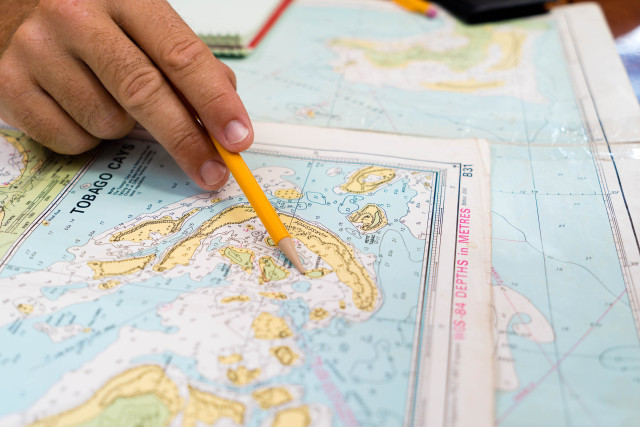
Two words: dead reckoning.
I learned how to triangulate my location with only a compass and a map, plot courses, calculate distances (did you know one nautical mile is equal to one minute of latitude?!), and more… But just being able to use the term dead reckoning (which is predicting where you are on a plotted course using time and speed) in my daily activities was reason enough to study the art of knowing where the hell I was and where the hell I was going.
Lesson #6: Etiquette
Sure, there are a lot of rules around who has the right of way in myriad situations (depending on wind, relation to the wind, whether you have your motor on, how big your vessel is, whether you’re in a restricted channel, and on, and on), but it can all be boiled down to one thing:

Being on the sea, for work or play, isn’t always easy. Yet for some reason, here we all are braving swells, pulling lines, messing around with knots, and pumping poop… So, let’s be in this together.
By my third day, waving to my fellow sailors-in-passing became second nature. (After accounting for the proper right of way rules, of course.)
I just knew I had a future in sailing once I had a handle of these basics… And I suppose that’s how I eventually got into trouble…
